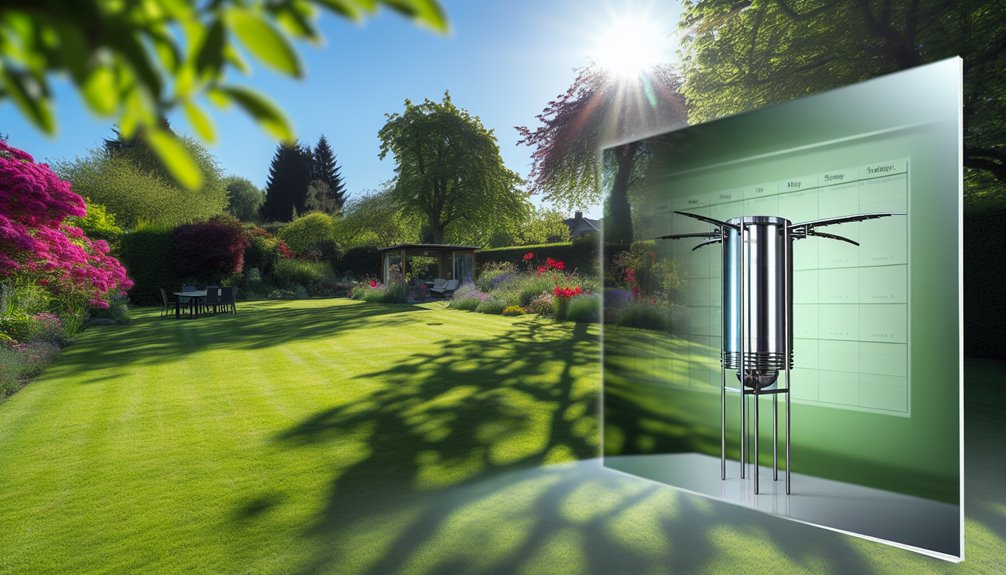If you manage seasonal mosquito pressure, prepaying can cut total spend 8–15%, lock service intervals, and prevent gaps that let adult populations rebound. With above-normal degree-days and wet forecasts, demand spikes and technician schedules fill fast. Prepay plans stabilize budgeting, secure priority slots, and align treatment cadence with regional vector thresholds. You’ll also hedge against in-season price hikes. The question isn’t if prepaying works—it’s when it yields the most value for your property and risk profile.
Why Prepaying Beats Pay-As-You-Go for Seasonal Coverage

Although pay-as-you-go feels flexible, prepaying for seasonal mosquito control optimizes cost, consistency, and outcomes. You reduce per-visit pricing by 8–15% on average, lock in supply and technician availability during peak weeks, and maintain interval adherence critical for residual efficacy curves. By funding the full cycle, you avoid skipped treatments that allow adult populations to rebound exponentially (r≈1.3–1.6/week in warm zones). Prepay benefits include predictable budgeting, priority scheduling, and fewer call-backs due to stabilized service cadence. You still retain service flexibility through rescheduling windows and weather contingencies, but you prevent fragmentation that undermines community protection goals and client satisfaction metrics.
Key Features to Look for in a Prepay Mosquito Plan
Building on the cost and performance gains of prepaying, evaluate plans against specific, measurable features: a defined service cadence (e.g., 21–28 day intervals aligned to residual half-life), documented active ingredients and application rates (AI %, ounces/1,000 sq ft), and guaranteed season length by growing degree days or local vector indices. Demand service guarantees tied to revisit triggers (e.g., bite counts, trap captures). Verify larvicide/adulticide integration, drift management, and buffer compliance. Require data logging: timestamps, weather, lot size, nozzle type. Ask for patient testimonials that reference outcomes, not impressions. Confirm technician training hours and licensing. Ascertain clear escalation pathways and response SLAs.
Cost Comparison: Calculating Savings Across a Full Season

Three inputs drive a true season-long cost comparison: treatment count, unit price per visit, and ancillary fees. You’ll quantify savings by modeling both pay‑as‑you‑go and prepay scenarios. Multiply projected treatments by unit price, then add travel, retreatment, and card-processing fees. For prepay, apply advertised discounts, fee waivers, and bundle credits, then divide by expected visits to validate per‑treatment economics. Calculate variance: savings = (retail total − prepay total) ÷ retail total. Stress-test assumptions with ±1–2 visits to reflect service cadence. Align with seasonal expenses and your budgeting strategies, ensuring predictability while sustaining service quality and technician time to protect your community.
Timing the Purchase: Weather, Peak Demand, and Price Locks
Those savings only materialize if you buy at the right moment. Track regional degree-day accumulations and rainfall anomalies to anticipate mosquito hatch cycles. When models predict an early spike, prepay before demand fluctuations trigger surge pricing. Vendors typically raise rates 8–15% once call volume exceeds staffing thresholds. Lock a preseason price in late winter, when seasonal trends show minimal precipitation and average lows below larval viability. Confirm the contract freezes per-visit rates, retreat fees, and fuel surcharges. Use a calendar reminder for renewal 30–45 days before average daily temps exceed 50°F. You’ll secure capacity, reduce stockouts, and protect budgets.
Real-World Scenarios: When Prepaying Makes the Most Sense

When forecasts point to above-normal degree-days and a wet spring, you’ll capture the most value by prepaying before call volume breaches vendor staffing limits. You lock technician capacity, secure price locks, and schedule early larvicide drops that boost seasonal effectiveness by reducing first-generation emergence.
If you manage HOA common areas, school campuses, or event venues, prepaid bundles align with budget considerations and compliance calendars, avoiding emergency premiums. In regions with floodplain recharge or irrigation cycles, prepayment guarantees interval treatments hit vector thresholds (Aedes, Culex) on time. For donation-funded programs, prepaying converts uncertain grants into predictable service cadence and measurable bite-rate reductions.
Conclusion
As the owner of Mosquito Eliminators of South MS, I truly believe that prepaying for our seasonal mosquito services is not just a smart financial decision, but a proactive step towards a mosquito-free environment for you and your loved ones. It brings peace of mind knowing that you’re locked in to save money, ensuring our technicians are always available when you need them most, and that your yard will be protected from those pesky adult mosquitoes. I invite you to visit our website at mosquitoeliminatorsms.com to learn more about how we can help you enjoy your outdoor spaces. If you prefer to chat, feel free to call me at (601) 336-2277. Together, let’s make your summer a little more enjoyable!

